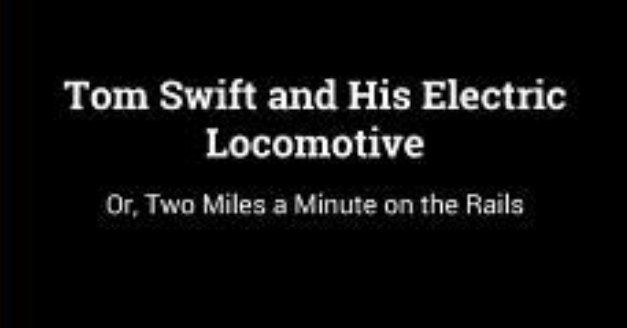CHAPTER XII — Tom Swift and His Electric Locomotive
byCHAPTER XII – Tom Swift and His Electric Locomotive unfolds in a climate of rising anticipation and unease as the long-awaited trial day for the Hercules 0001 draws near. Tension escalates when Ned Newton uncovers signs of sabotage—an attempt involving explosives meant to cripple the project. The immediate investigation led by Tom, Ned, and Barton Swift identifies the likely perpetrator: O’Malley, a known agent acting under orders to hinder the H. & P. A. railroad. The motive seems rooted less in destroying Swift’s business directly and more in obstructing the contract’s fulfillment. Recognizing this threat, Tom orders an overhaul of security. The perimeter fence is reinforced, and copper wire—potentially electrified—is mounted atop the stockade walls to deter further intrusion. These measures show Tom’s transition from inventor to strategist, anticipating that innovation alone won’t be enough to safeguard the future he’s building.
The urgency to shield the project doesn’t slow progress on the Hercules 0001. Yet, every security improvement adds to the mounting cost, and Ned begins voicing concern. The budget is stretched thin, especially as Tom insists on replicating real-world conditions for the trial. This requires a complex power system: a step-down transformer that converts a massive 100,000-volt alternating current into a usable 3,000-volt direct current, mirroring the energy delivery standards of the Hendrickton & Pas Alos line. Tom remains unfazed by the expense, reminding Ned that a successful demonstration could launch their technology into wide-scale adoption. He believes the cost of failure—both financial and reputational—would be far greater. Despite growing fiscal tension, Ned continues supporting Tom, balancing concern with loyalty.
Beyond the power system, Tom supervises the installation of a dedicated two-mile track within the protected compound. This isn’t just a test route; it’s a controlled replica of field conditions, complete with a dual-wire overhead trolley system for seamless energy transfer. The layout demands precision and introduces another layer of expense, frustrating Ned further. However, Tom knows that without this infrastructure, the test results would lack credibility. The overhead conductors and converted current ensure that Hercules 0001 will be evaluated under pressures identical to those it will face during full deployment. This calculated risk reaffirms Tom’s approach—engineering that doesn’t compromise, even under financial stress.
Adding to the complexity is the constant threat of industrial espionage. Tom tightens protocols, restricts yard access, and installs alarm triggers on key components. Every team member is briefed daily. Koku, ever-vigilant, becomes a fixture in the yard’s night patrols. Tom recognizes that physical innovation must now be defended as fiercely as intellectual property. The sabotage attempt proves their enemies aren’t just theoretical. It validates his caution and justifies the defensive layers now surrounding the project. Unlike the world of pure invention, success here is defined not only by performance, but by survival.
In the quiet moments between tests and construction reviews, Tom reflects on the broader implications of what he’s doing. The Hercules 0001 isn’t just a locomotive—it represents a challenge to decades of steam dominance and a statement of what electric power can achieve. Rivals like the “Jandels,” symbolic of outdated tech and entrenched interests, see it as a threat. Tom sees it as the future. And though obstacles remain, he thrives under the pressure. Every problem becomes an opportunity to refine, every threat a motivator to innovate.
The chapter closes with a feeling of controlled intensity. The pieces are in place—the track, the power station, the protective systems—and the locomotive stands ready. Still, unease lingers, as everyone knows the upcoming trial is about more than speed or power. It’s about trust in new technology. It’s about proving that electricity can do more than match steam—it can surpass it. Tom Swift, driven by vision and supported by a loyal team, is ready to face the test. And whether the Hercules 0001 flies or falters, the trial will mark a turning point not just for the invention, but for the future of rail itself.

